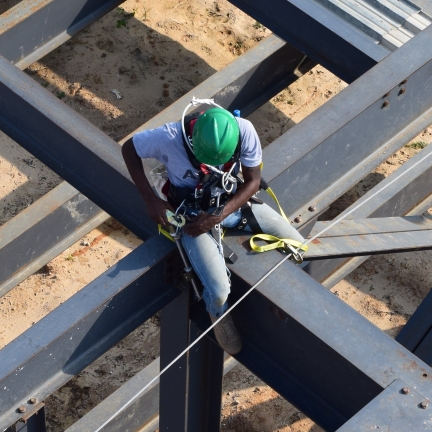Apprenticeship Statistics
On-the-Job Learning
Structural Ironworkers Apprenticeships provide 5,600 to 6,000 hours of paid on-the-job learning.
Related Instruction
A minimum of 537 hours of related instruction that includes OSHA, lift training, first aid/CPR, NCCER Core, Level One and additional NCCER Ironworker modules.
Credentials & Certifications
Apprentices earn industry-recognized credentials and certifications including NCCER, OSHA, lift operator, first aid/CPR certifications.
